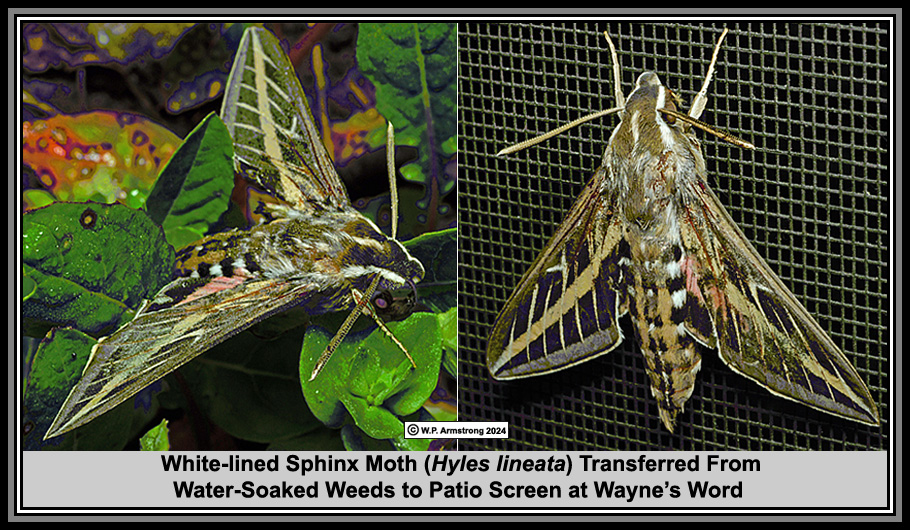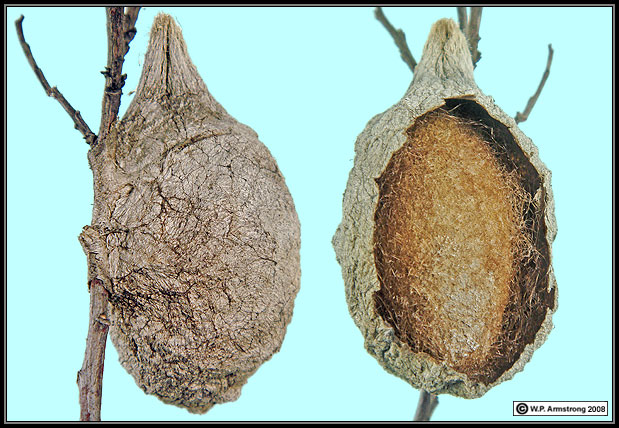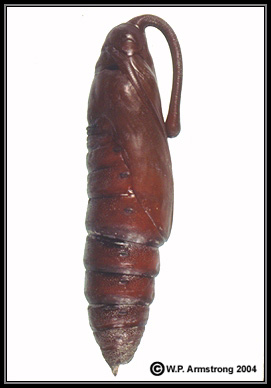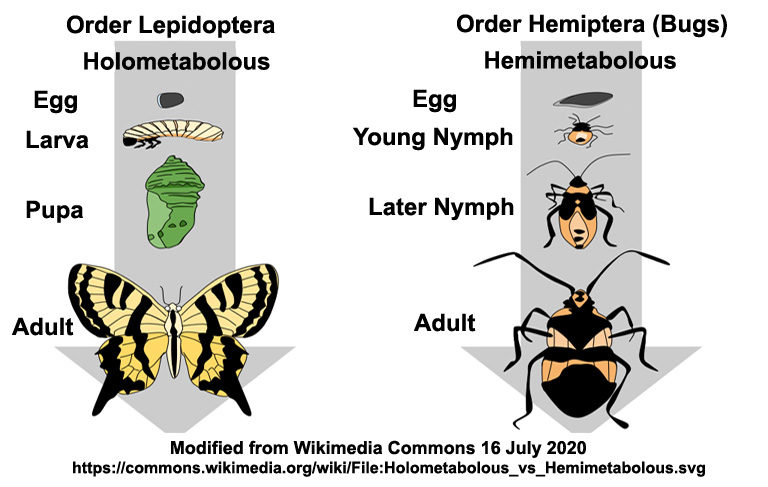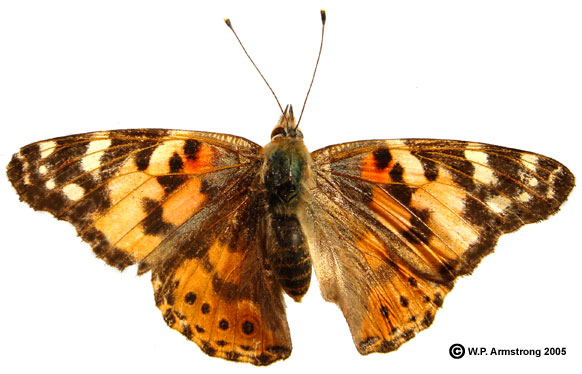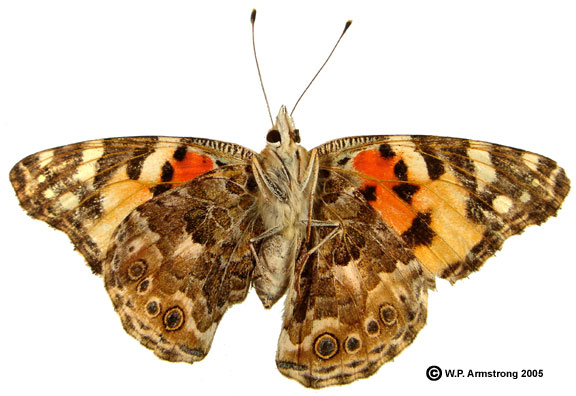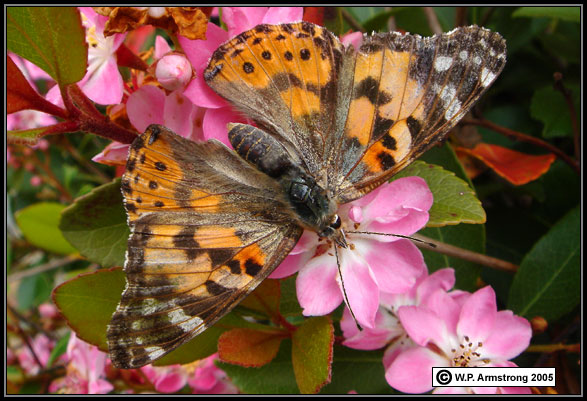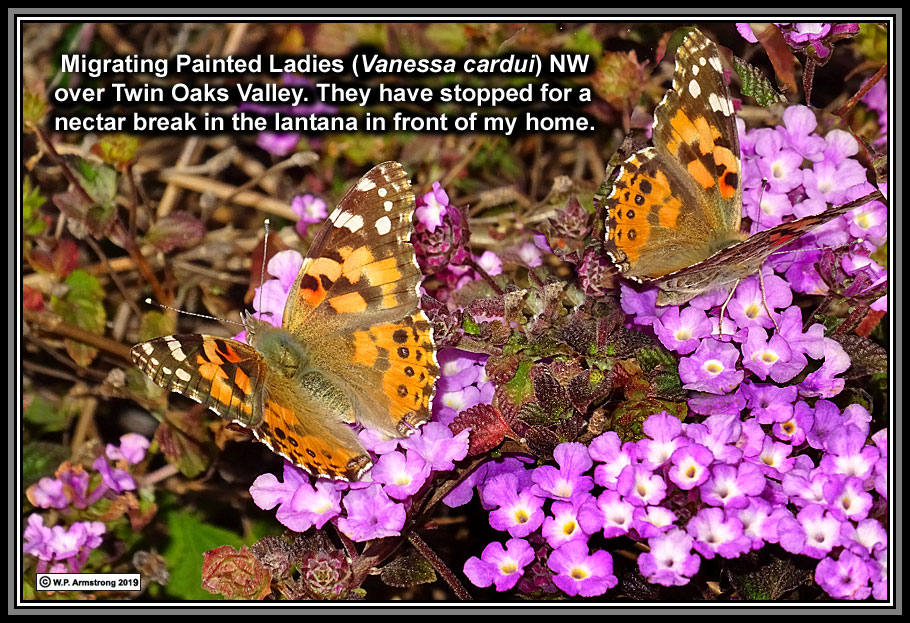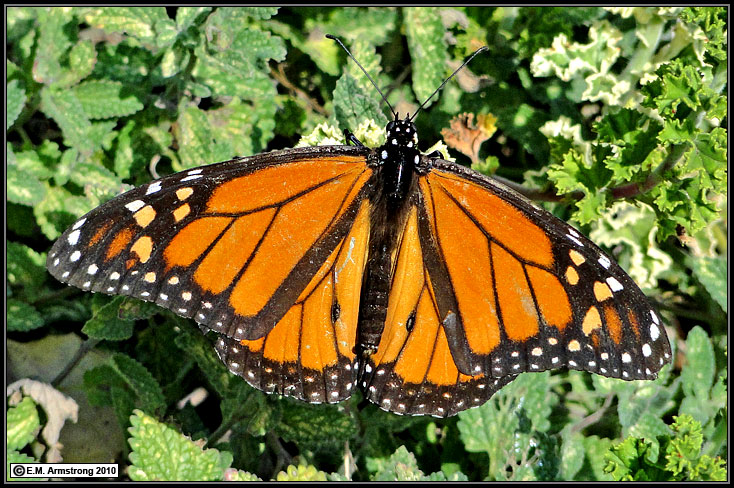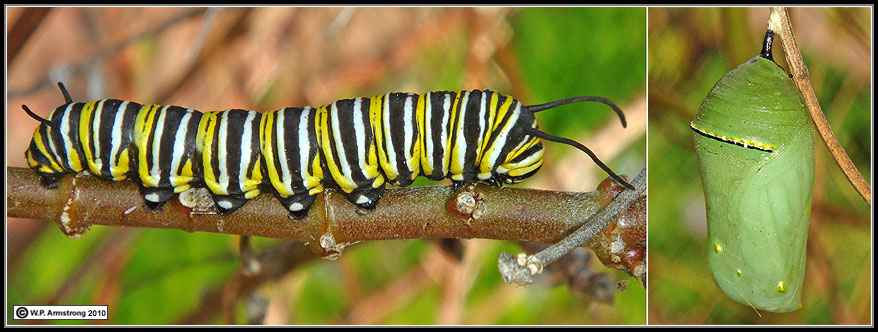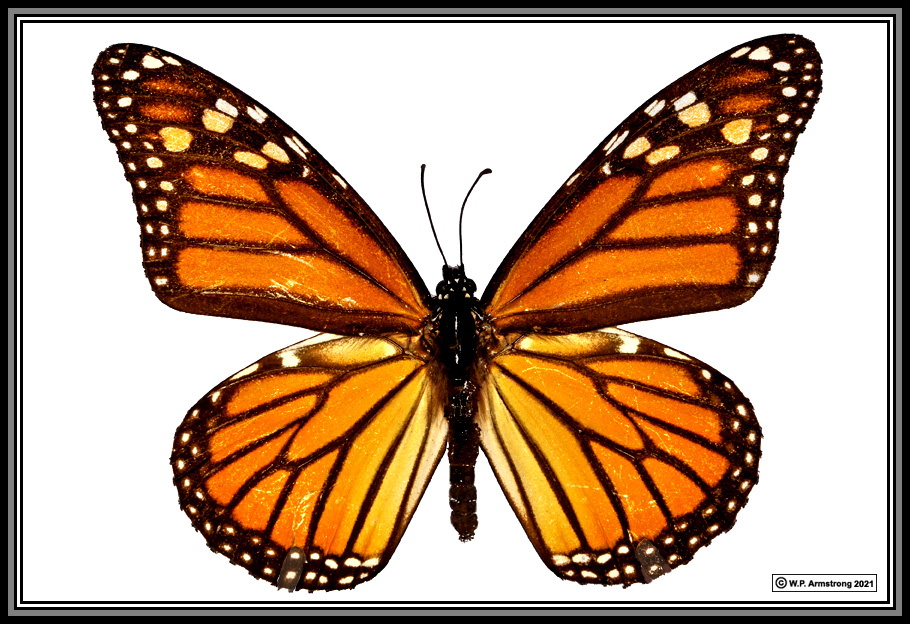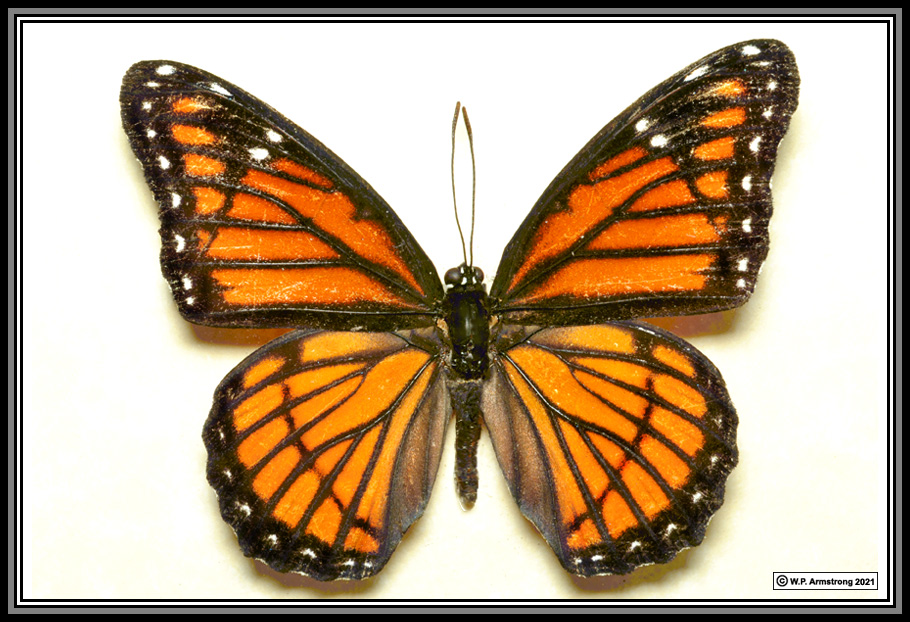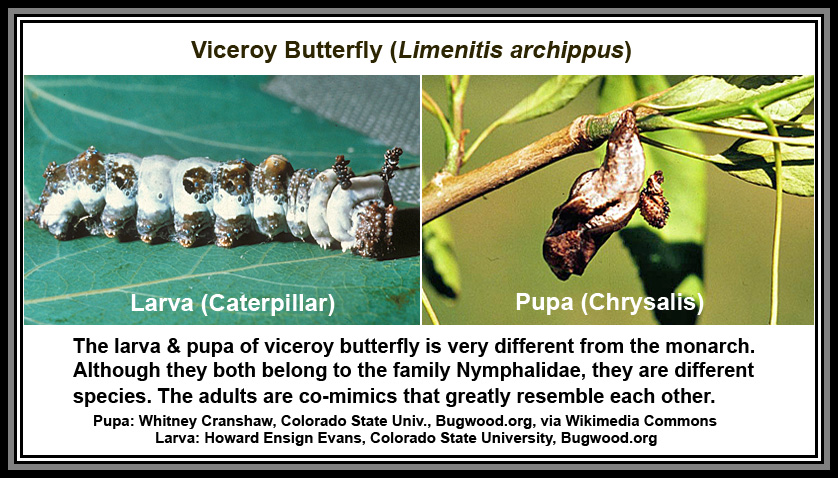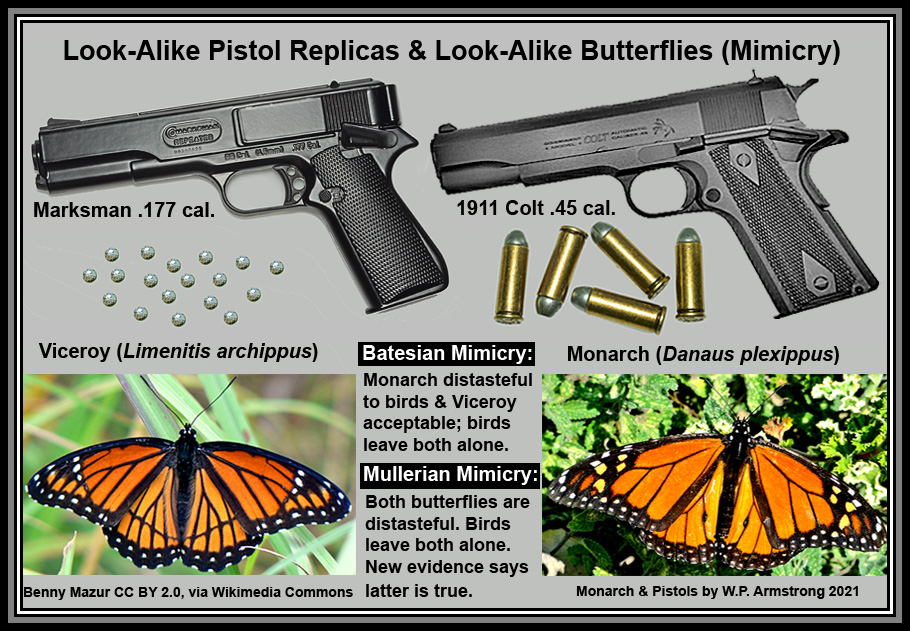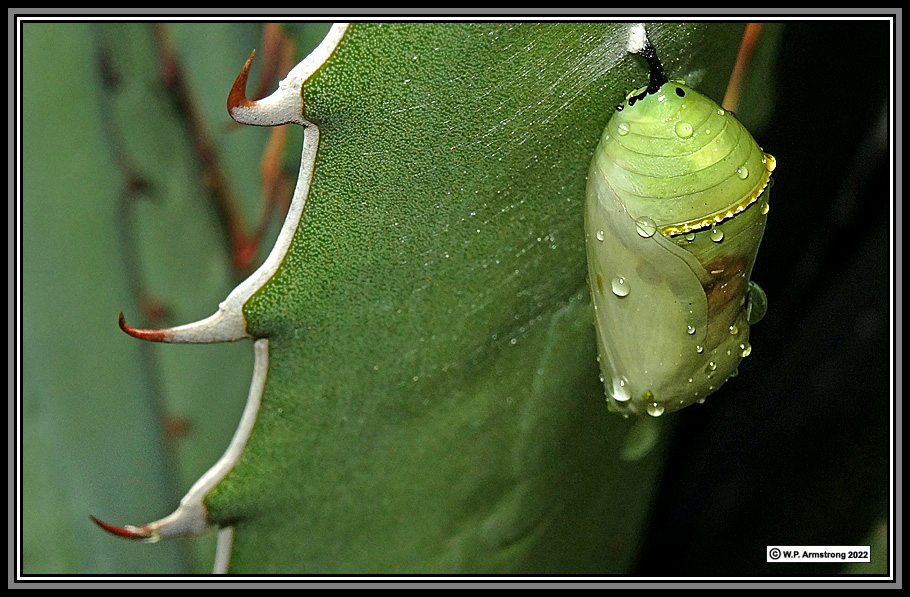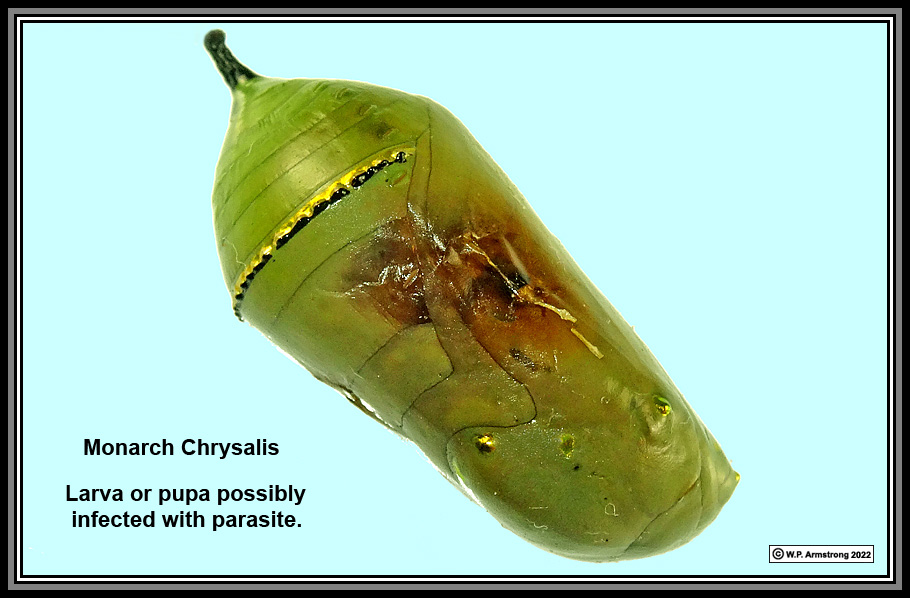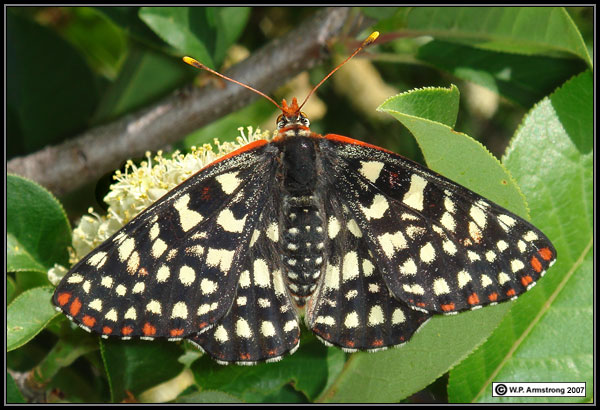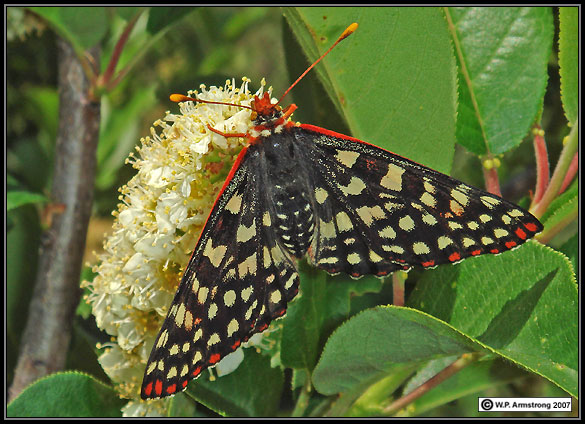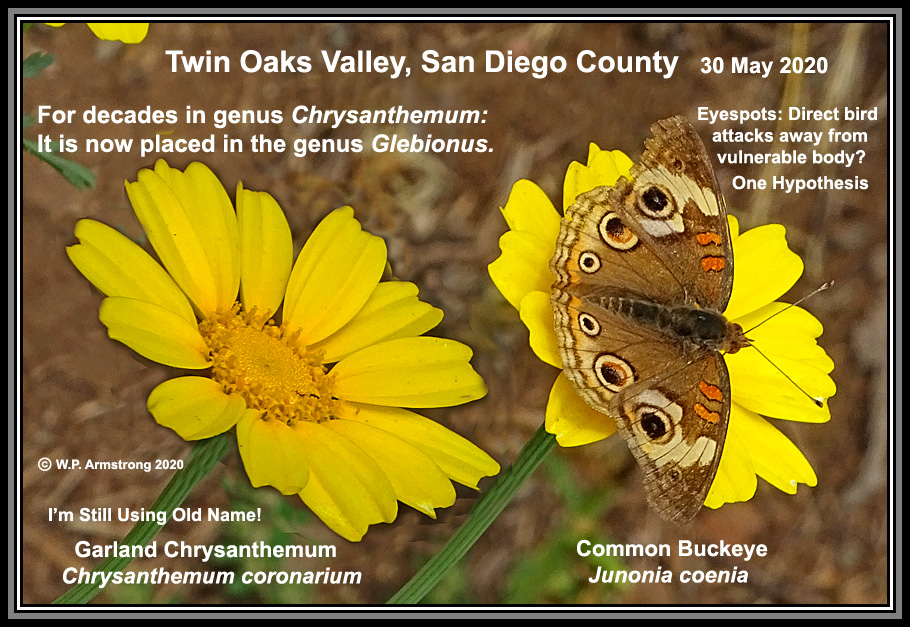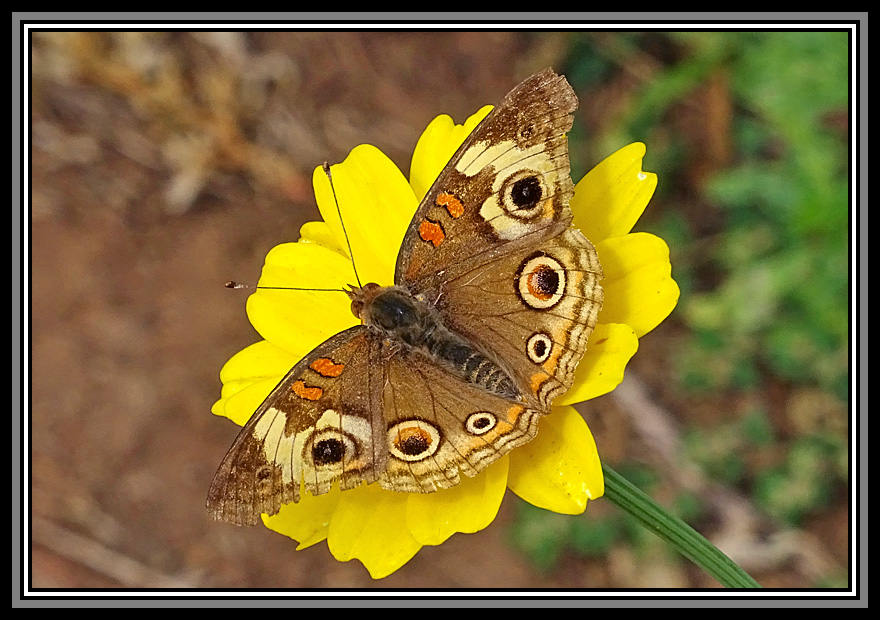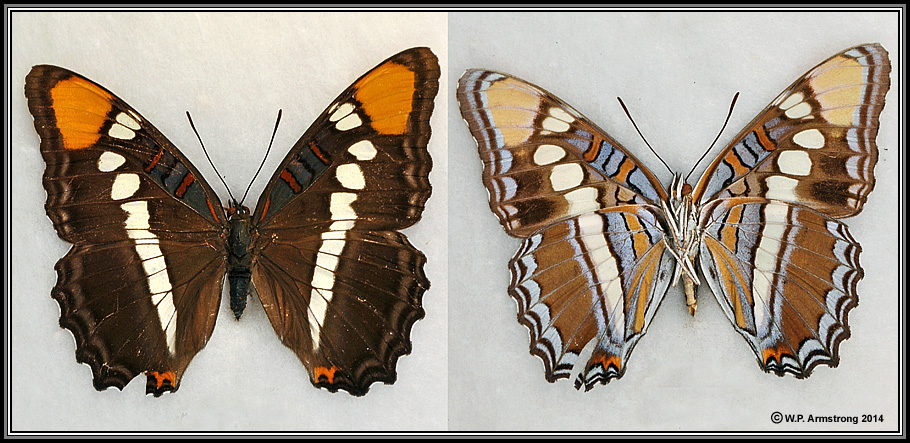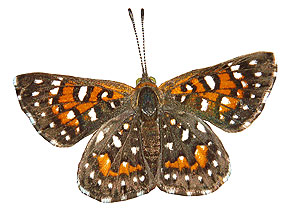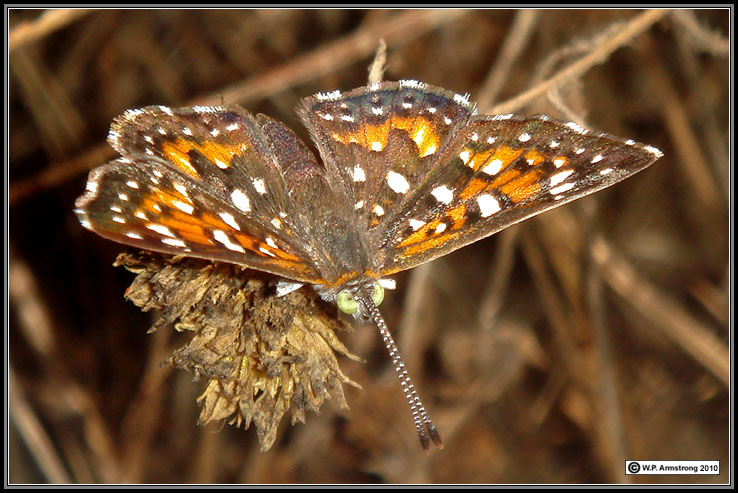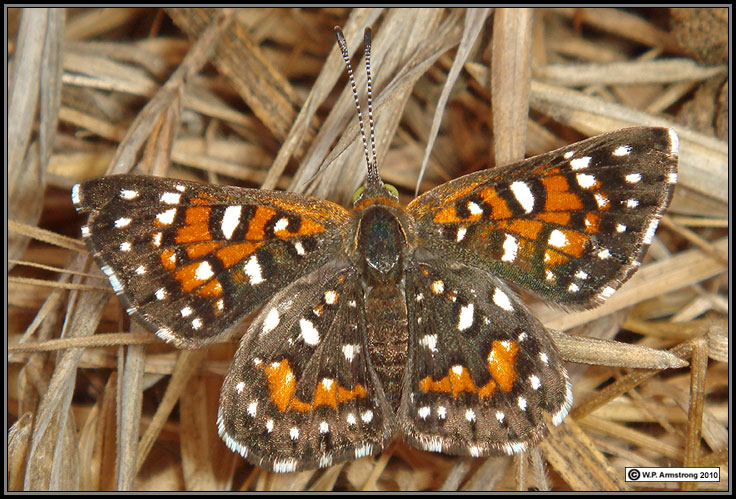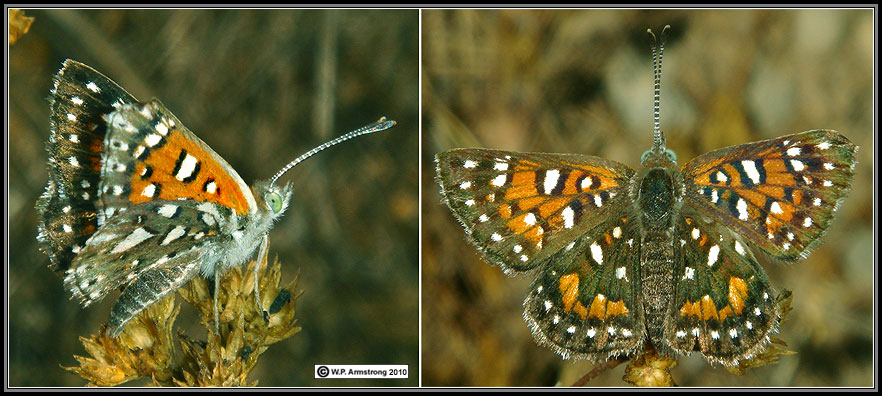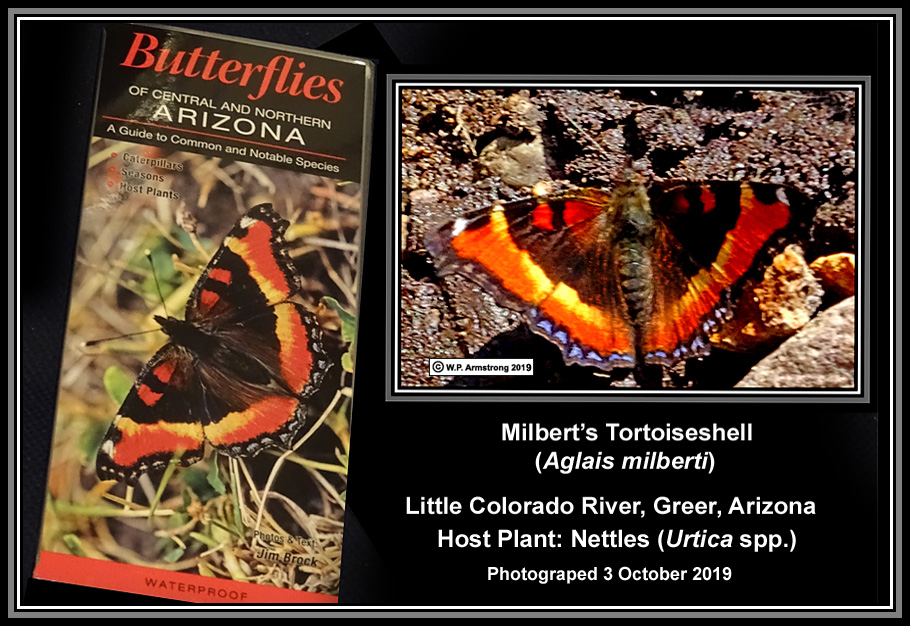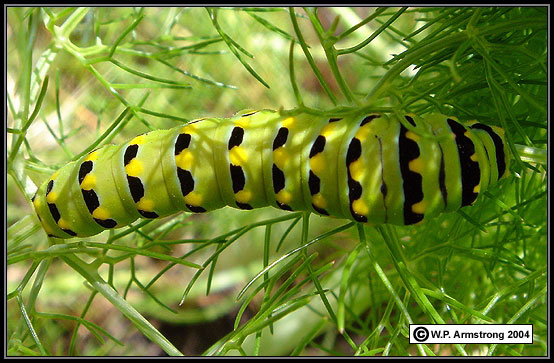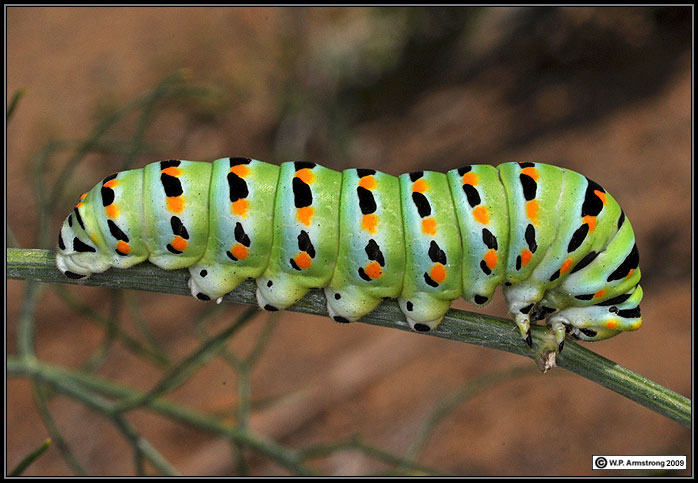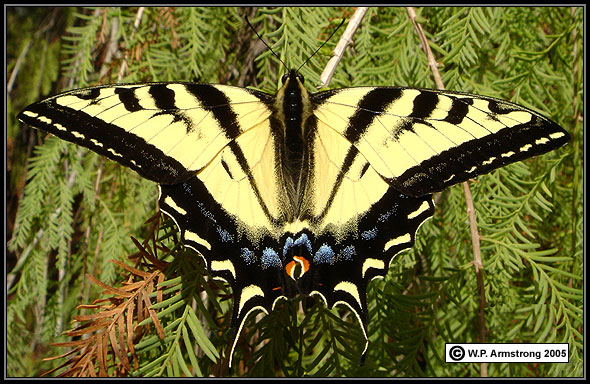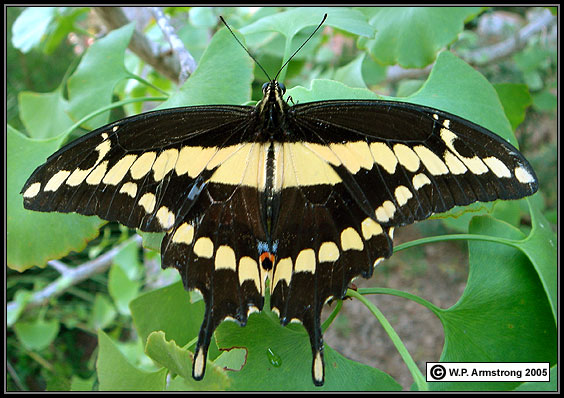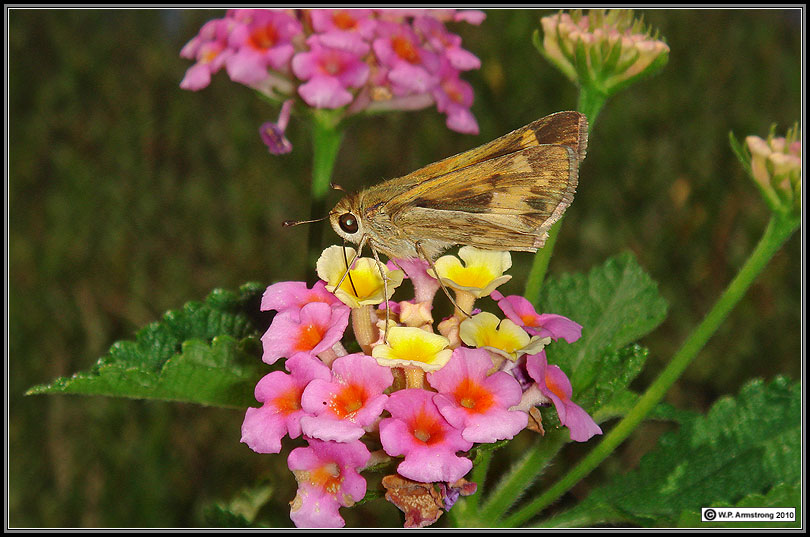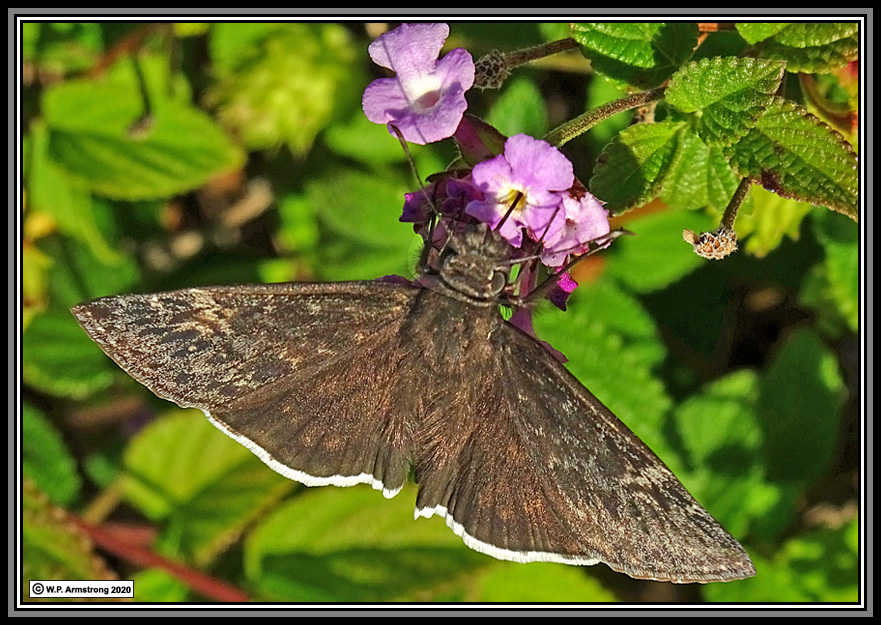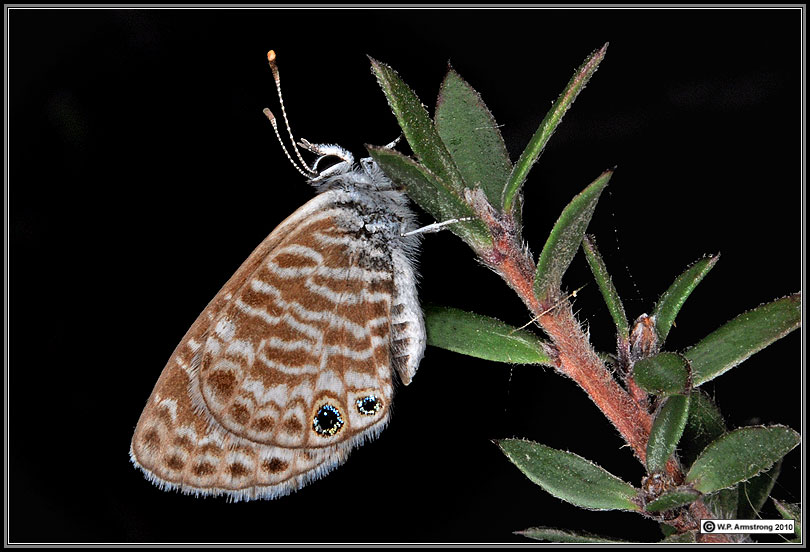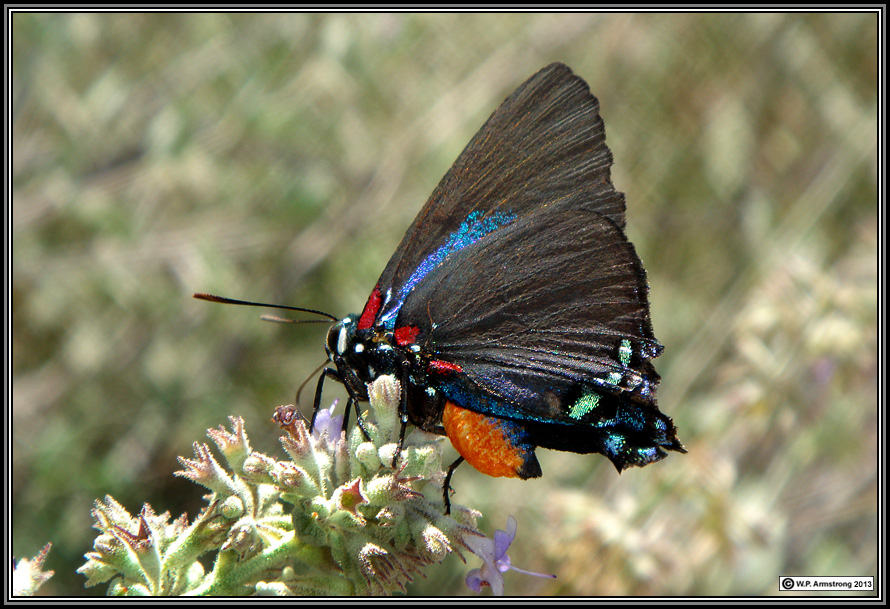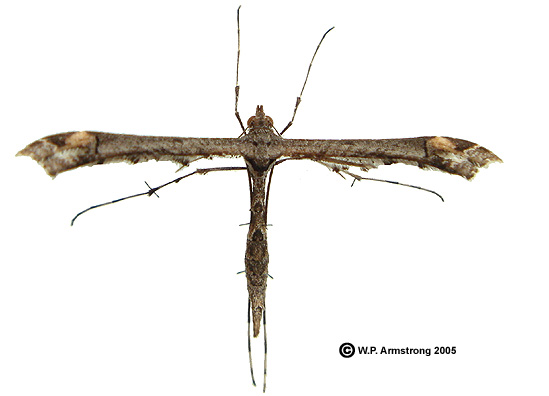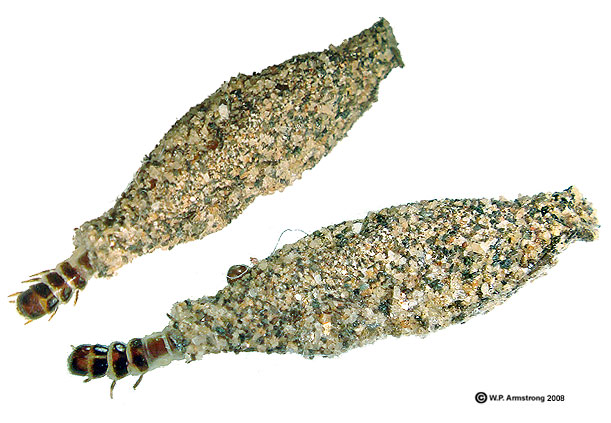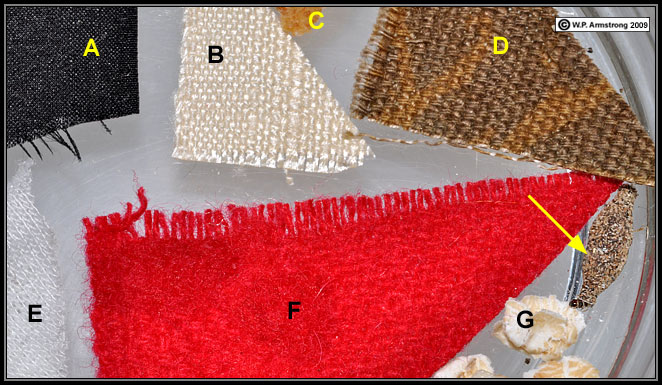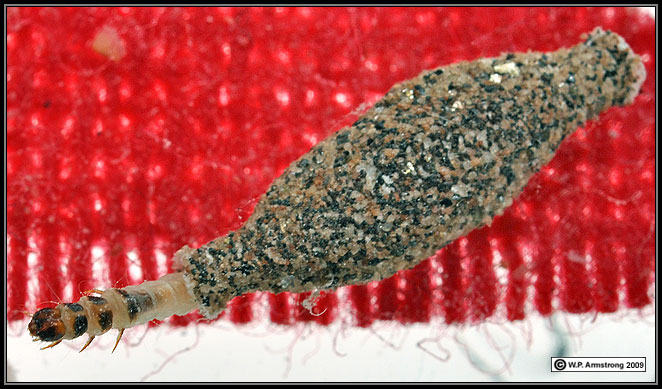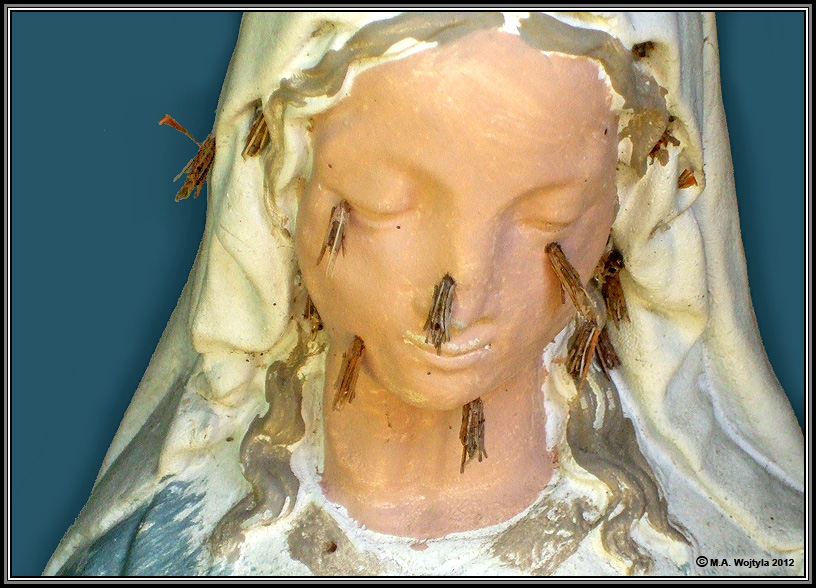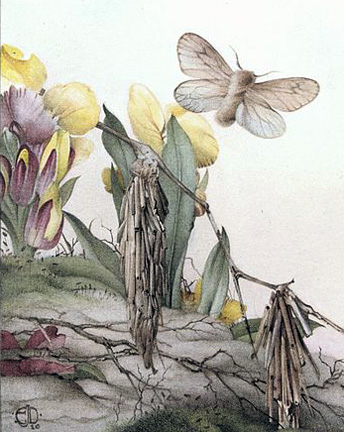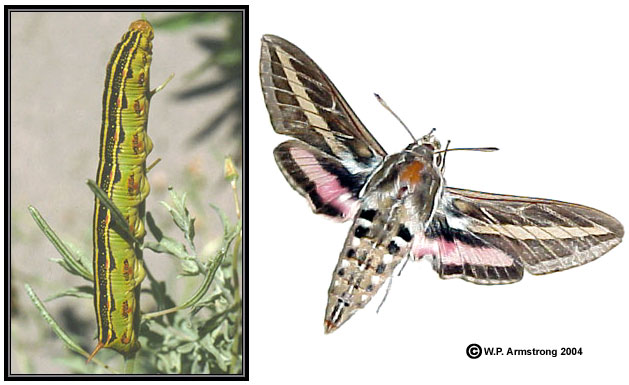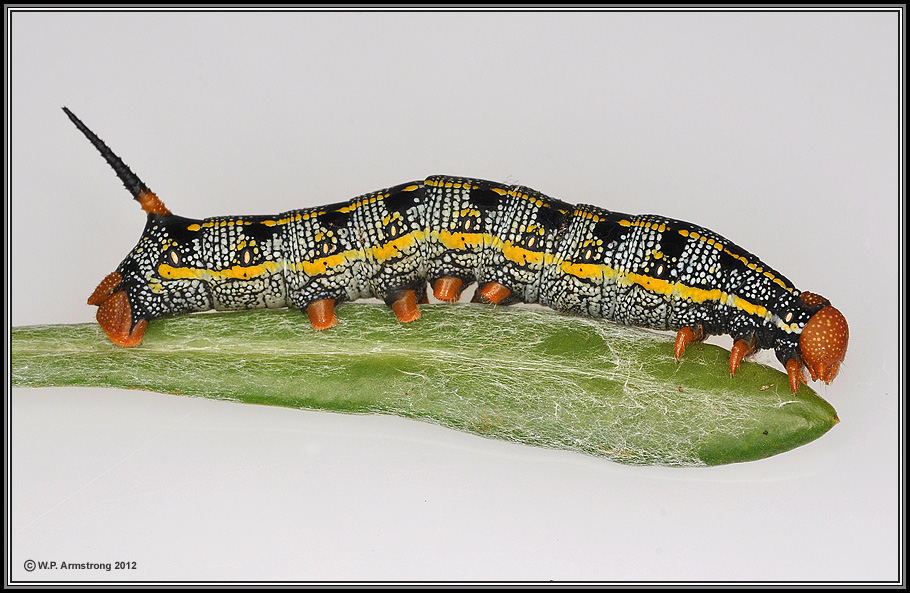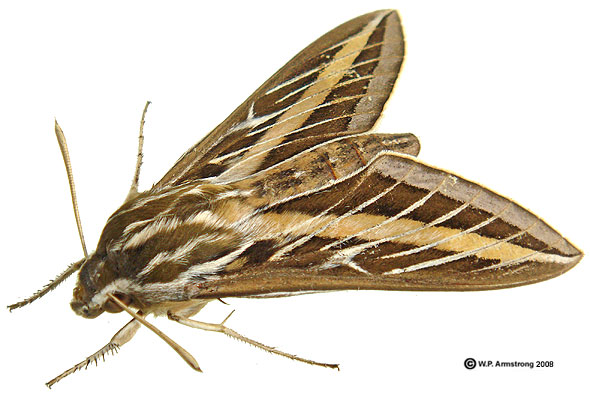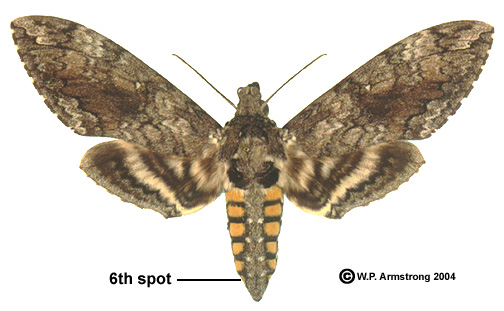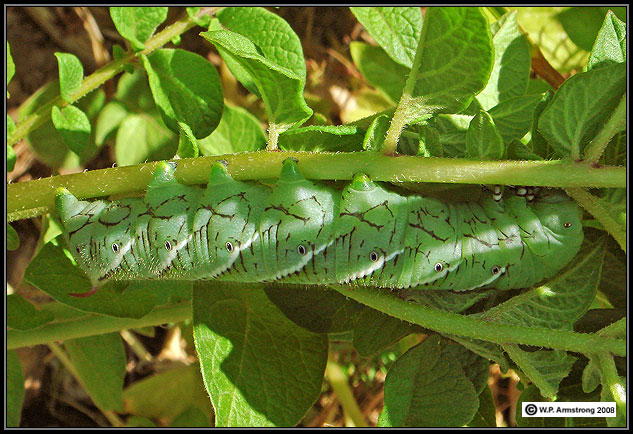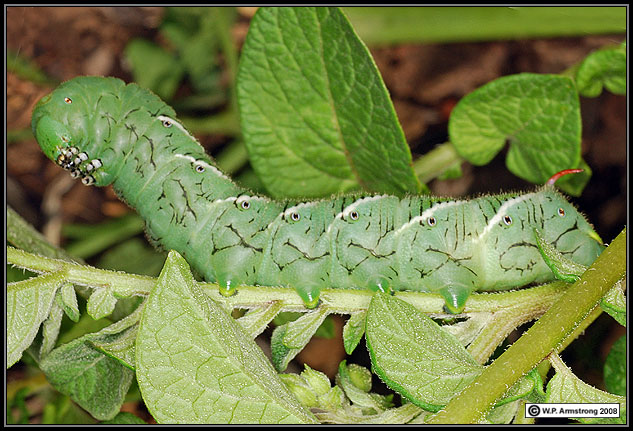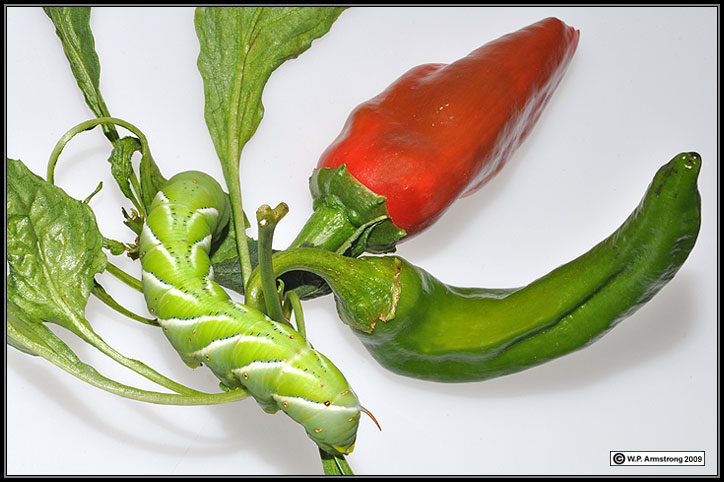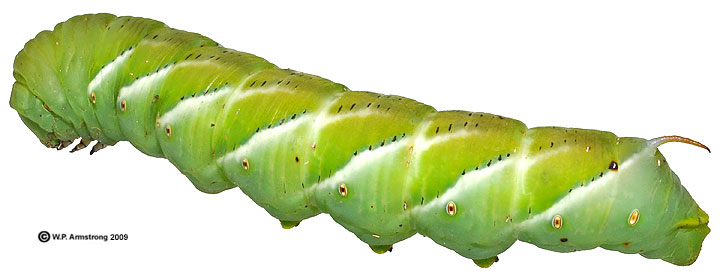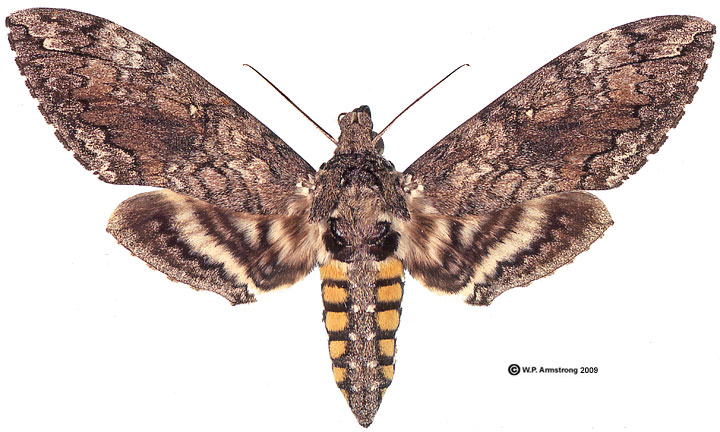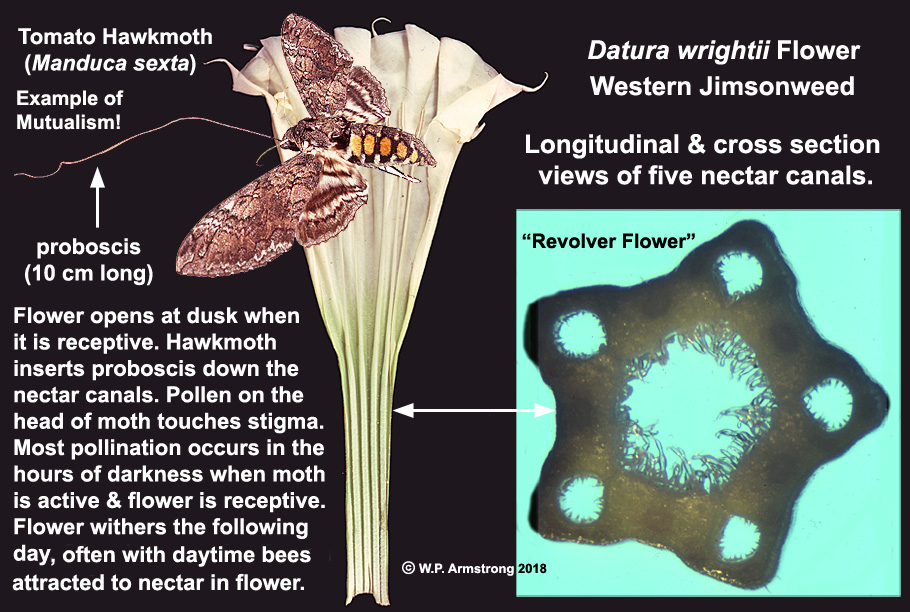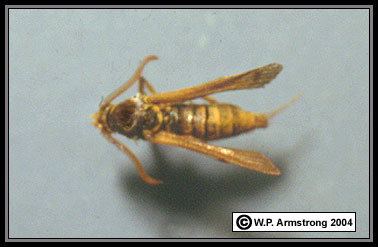|
Pacific Green Sphinx Moth (Family Sphingidae)
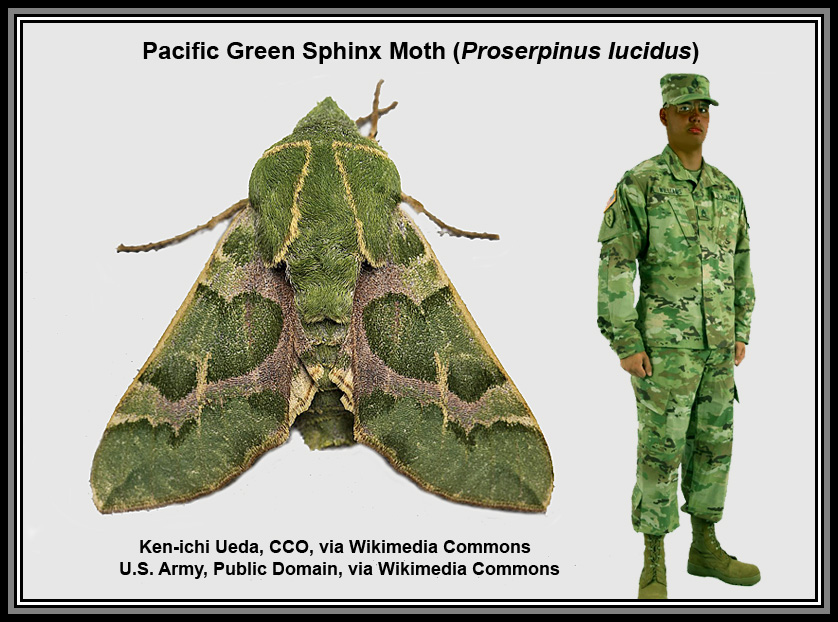
|
This unusual moth was recently reported from Julian in San Diego County. Its remarkable color pattern matches military camouflage. "Camouflage" in military uniforms, the word spelled the same in French, dates back to French armies in the early 1900s. Moths developed this much earlier through the process of natural selection to avoid being caught and eaten. The latter process was made famous by a man named Charles Darwin.
|
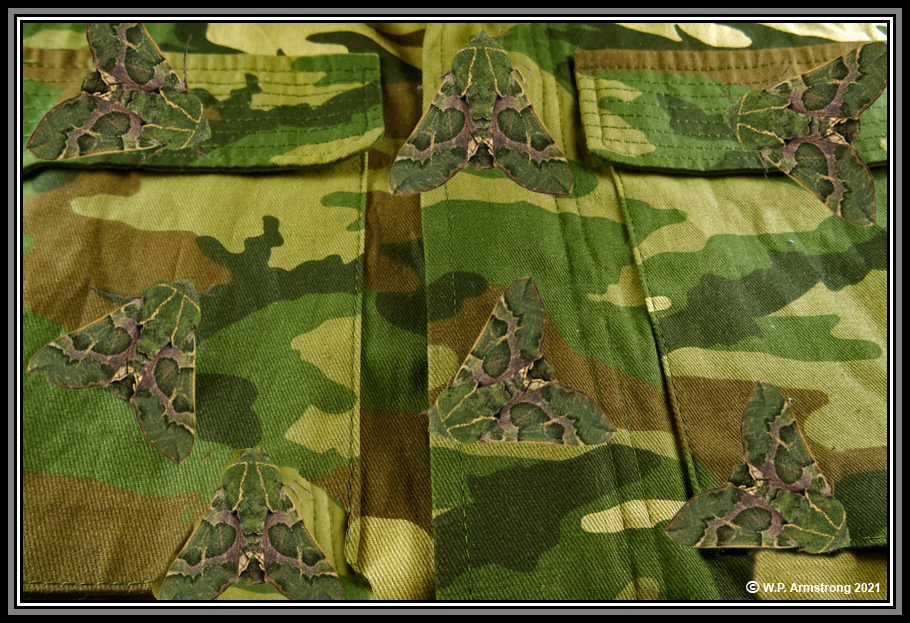
|
Did moth evolve to match military jacket, or was jacket pattern created to match moth?
|
|
Proserpinus lucidus is a very early season species. Adults are active during the winter months, from mid-January to mid-April. There is one generation per year. Males are nocturnal and come to light, whereas females are rarely collected and might be sedentary, diurnal, or unattracted to light. This species does not feed as adults. Larvae feed on wildflower genera Clarka and Camissonia (Onagraceae). Pupation occurs under leaf litter and underground during the summer and fall months. Adults emerge the following winter.
|
Bee Hawk Moths (Family Sphingidae Genus Hemaris)
|
These moths are also referred to as "clearwing moths" because the scales are shed from wings leaving clear (transparent) patches. In Hemaris and related genera the transparent wings and robust, fuzzy body superficially resembles a bee in the order Hymenoptera.
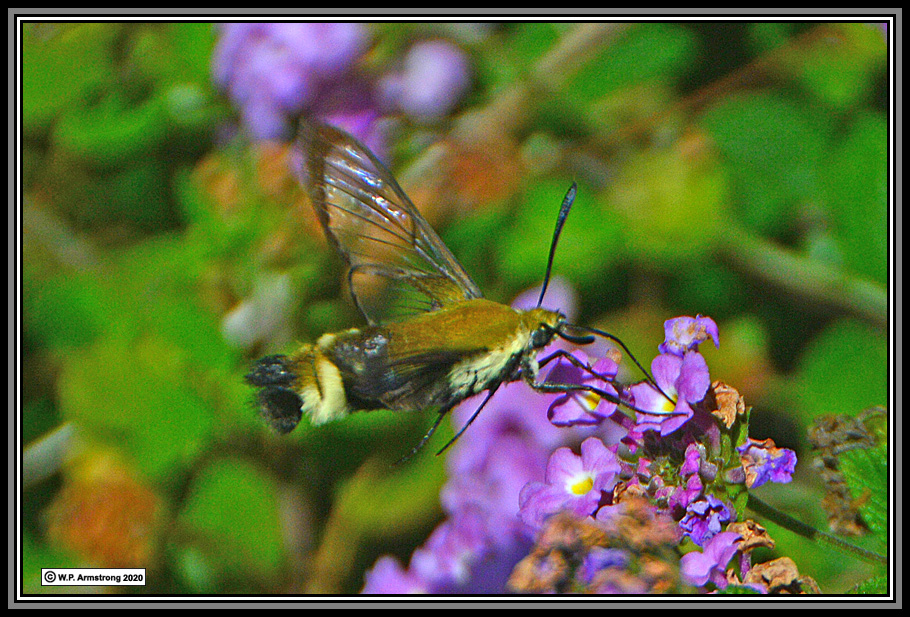
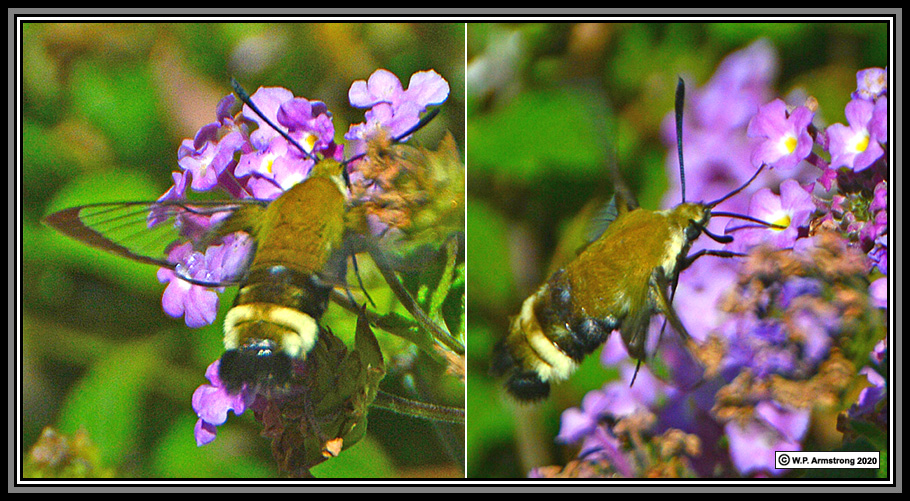
|
Snowberry clearwing moth (Hemaris diffinis) on Lantana in Twin Oaks Valley, San Diego County. This is one of the many fascinating species in the genus Hemaris, also called "bee hawk moths."
|
|
Mimicry: One insect (called a mimic) that is perfectly palatable to its predator resembles another insect (called the model) that is quite disagreeable to the same predator. There are actually two types of mimicry: Batesian and Mullerian. Mimicry in which the mimic is essentially defenseless is called Batesian Mimicry. A harmless moth (Aegeria) is a Batesian mimic because it is incapable of stinging another animal, but yet it resembles the yellow jacket wasp (Vespula). Mimicry in which the mimic shares the same defensive mechanism as the model is called Mullerian mimicry. The yellow jacket wasp and bumblebee (Bombus) are Mullerian mimics because they both have bright yellow and black colors and use powerful stings as a defensive mechanism.
|
|
This moth resembles a wasp. Is this an example of Batesian or Mullerian mimicry?
|
|
Achemon Sphinx Moth (Eumorpha achemon)
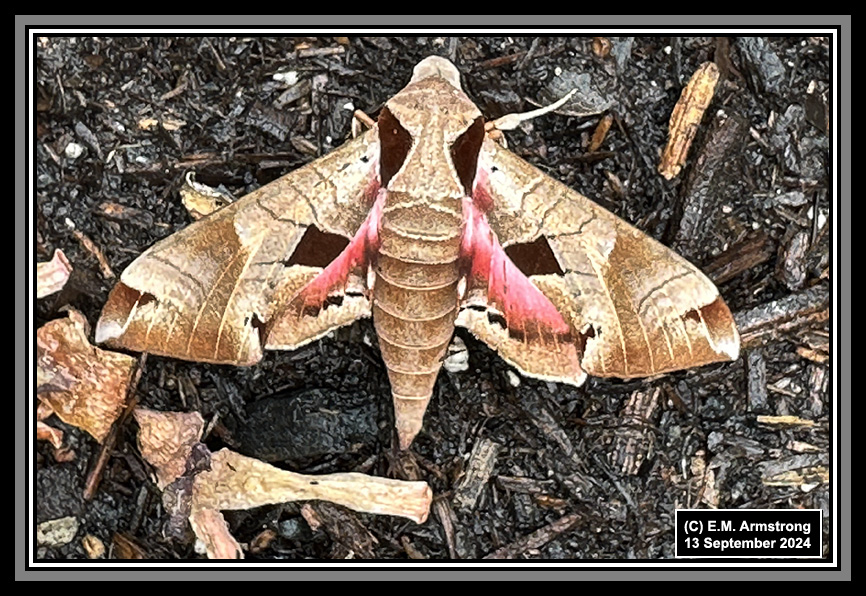
|
Another large, striking moth in the hawkmoth family (Sphingidae): Eumorpha achemon (Achemon Sphinx Moth). It was photographed in residential area between Fallbrook & Escondido (San Diego County). It is distinguished from other Eumorpha species by hind wings that are pink on upper side. Larvae are known to feed on Virginia creeper (Parthenocissus quinquefolia) of eastern U.S. and on leaves of grape vines (Vitis), both wild & cultivated in vineyards.
|
Ceanothus Silk Moth (Family Saturniidae)
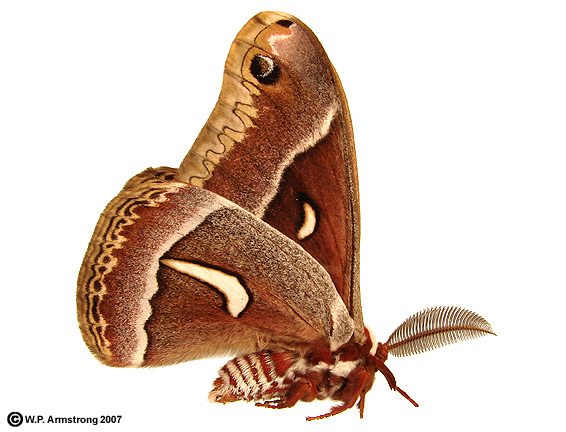
|
Lateral view of an adult ceanothus silk moth (Hyalophora euryalus).
|
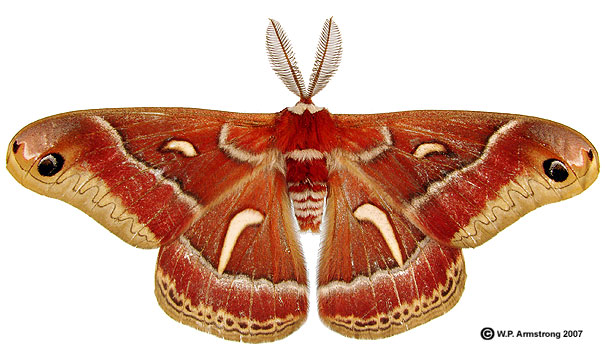
|
Dorsal view of an adult ceanothus silk moth (Hyalophora euryalus).
|
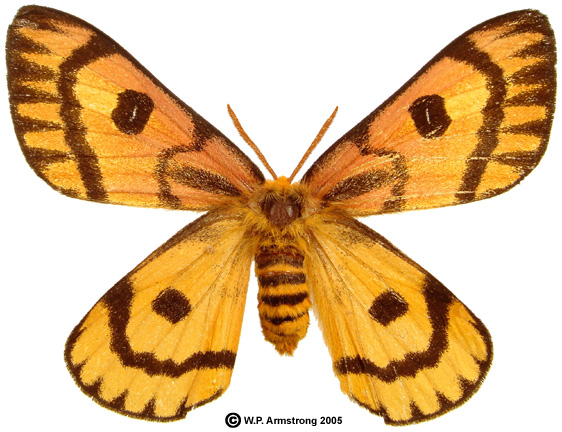
|
Sheep moth (Hemileuca eglanterina, a member of the tropical family Saturniidae.
This very striking moth is native to the sagebrush country east of the Sierra Nevada.
|
Black Witch Moth (Superfamily Noctuoidea: Family Erebidae)
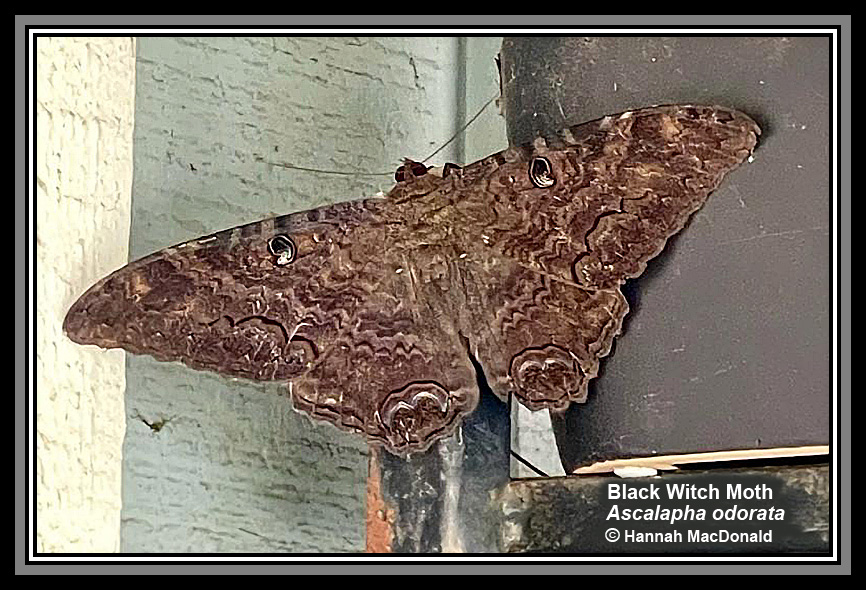
|
Black Witch Moth (Ascalapha odorata): A large, nocturnal, migratory moth occasionally seen in southern California. There are records of female moths with wingspans of 20 cm. (8 inches). The unusual diagnostic marking on each forewing is a spot shaped like the number nine or a comma. They are typically dark brown, but may appear darker depending on the lighting. This species has an enormous distribution across the United States (including Hawaii) and south to Brazil. It is also migratory into Canada. Because it is so unusual, people have attributed all sorts of folklore to this moth, hence the common name "black witch." Wikipedia has a lot of mythological information beyond the scope of Wayne's Word. It is doubtful that you will win the lottery if one lands above your door. Special thanks to naturalist Hannah MacDonald for finding & photographing this remarkable moth in Vista, California.
|
Yucca Moths (Family Prodoxidae)
Jumping Bean Moth (Family Olethreutidae)
Silkworm Moth (Family Bombycidae)
Crambidae: The Crambid Snout Moth Family
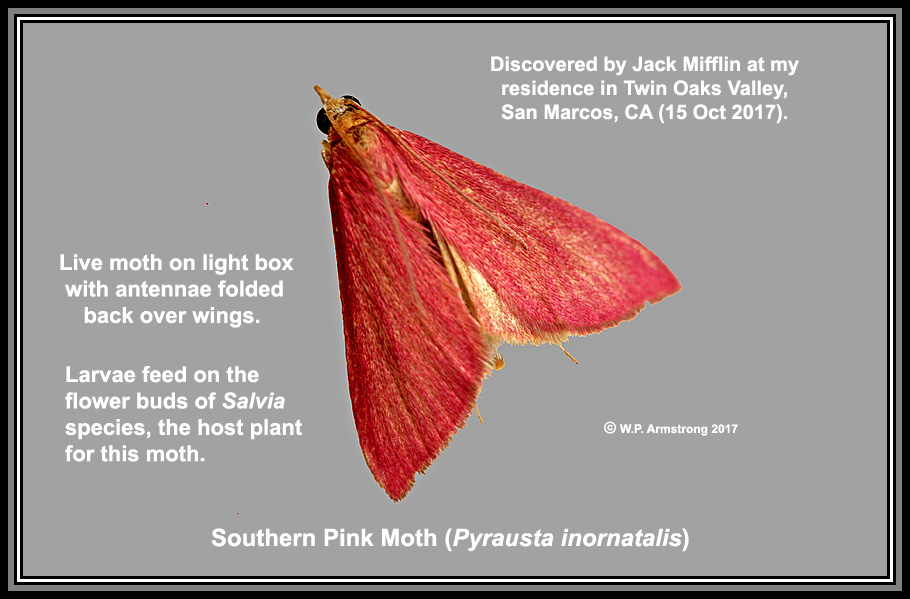
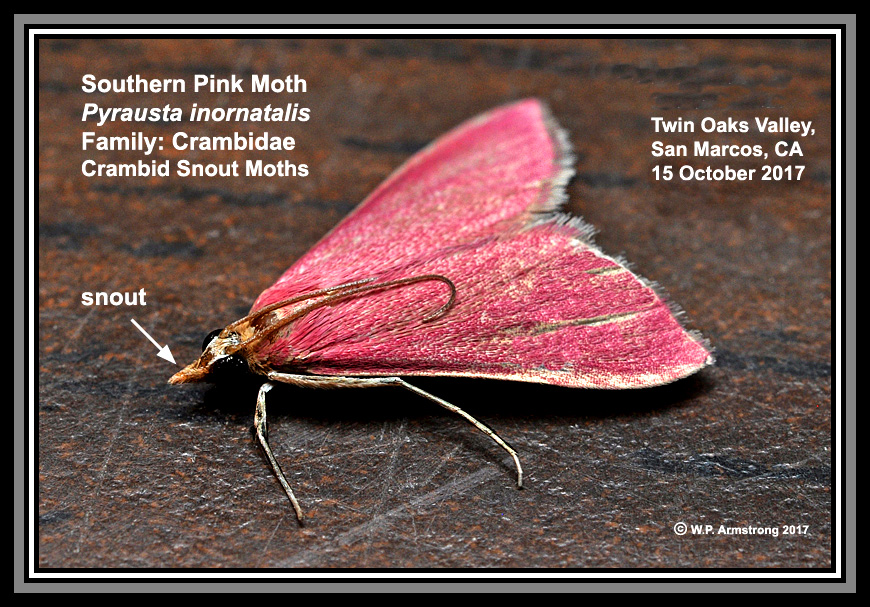
|
This attractive pink moth showed up in my living room at a birthday party. It is truly an escape artist. After it escaped from my light box, I found it later on my brown microscope table (see above image). Its larvae feed on the buds of sages (Salvia), its host plant. I have 3 species of Salvia in my yard: The native Cleveland sage (Salvia clevelandii) and the introduced sages: Canary Island sage (S. canariensis) and Mexican sage (S. leucantha). This moth has a snout at its anterior (head) end. There are also snout butterflies (Libytheana carinenta) in the butterfly family Nymphalidae.
|
Erebidae: Tiger Moth Family (Also Called Erebid Family)
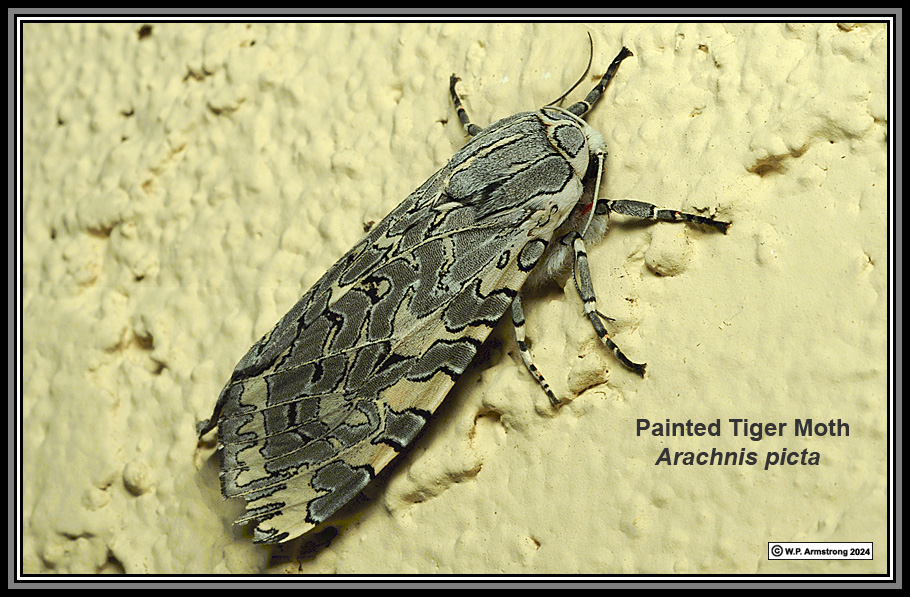
|
Painted Tiger Moth (Arachnis picta) on Wayne's Word front porch.
|
References:
- Evans, A.V. 2007. Field Guide to Insects and Spiders of North America. Sterling Publishing Co., Inc. New York, New York.
- Hogue, C.L. 1993. Insects of the Los Angeles Basin. Natural History Museum of Los Angeles County.
|
|

